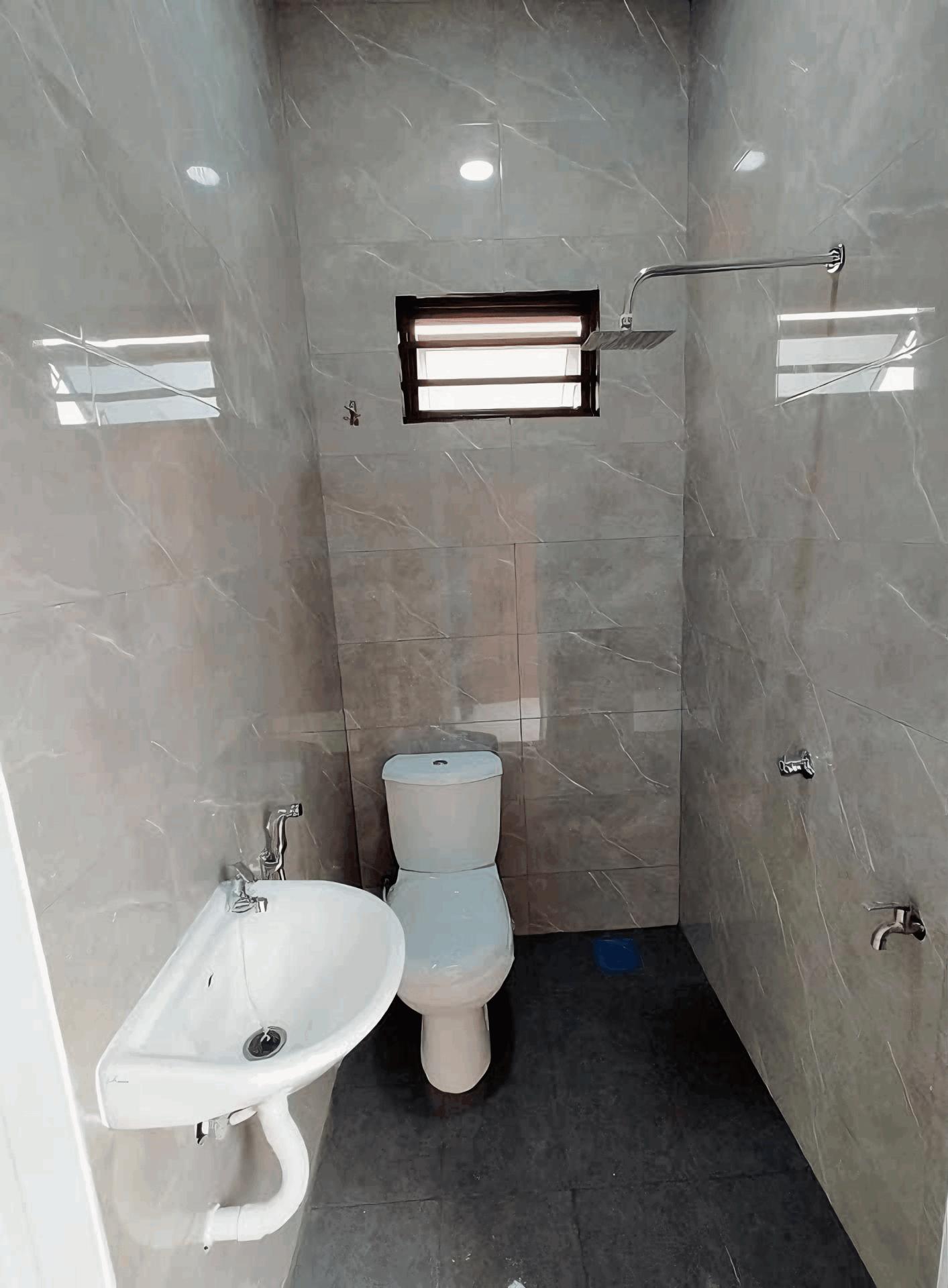The Complete Guide to Obtaining Plan Approval and Permits for Home Construction
Embarking on the journey of building your dream home is an adventure filled with inspiration, creativity, and excitement. Yet, amid the thrill of design and construction, lies a crucial, often overlooked component of the process: the labyrinth of plan approvals and permits. Navigating through zoning laws, building codes, and regulatory frameworks may not have been part of your dream, but understanding these elements is essential to turn your vision into reality without unforeseen delays or complications.
In this comprehensive guide, we aim to demystify the intricacies of obtaining plan approval and necessary permits for home construction. From the initial sketches of your architectural dreams to the moment you break ground, we’ll walk you through every stage of the permitting process. You’ll discover the importance of researching local regulations, engaging with municipal offices, and ensuring that your plans align with safety and environmental standards. We’ll provide insights into common pitfalls and share best practices to streamline the approval process, helping you navigate bureaucracy with confidence.
Whether you are a first-time builder or a seasoned developer, understanding the nuances of permits and approvals can empower you to facilitate a smoother construction experience. Join us as we unlock the essential steps involved, equipping you with the knowledge necessary to tackle approval hurdles effectively and transform your vision into a tangible structure that you can proudly call home. Together, we will turn the daunting task of securing permits into a manageable aspect of your exciting construction journey.
Understanding the Regulatory Landscape for Home Construction
Navigating the rules and regulations surrounding home construction can feel like traversing a complex web. Each jurisdiction may have its unique set of building codes, zoning laws, and environmental considerations that need to be addressed before a project can even begin. Generally, these regulations are designed to ensure safety, sustainability, and community cohesion. Knowing how to interpret and comply with these guidelines is crucial for any homeowner or contractor looking to initiate a construction project.
To help clarify the overwhelming amount of information, it is essential to become familiar with some common categories of regulations, including:
- Building Codes: Mandate minimum construction standards and safety measures.
- Zoning Laws: Determine the types of structures allowed in specific areas.
- Environmental Regulations: Address resource usage and waste management to protect local ecosystems.
- Permitting Processes: Outline the step-by-step procedures to secure the necessary approvals.
A critical step in navigating this regulatory landscape is engaging with local authorities. Establishing a good rapport with planning departments and code enforcement officers can often streamline the permitting process. Additionally, many municipalities offer online resources and workshops that provide insight into local regulations and best practices. Understanding the nuances of local laws not only aids in compliance but also facilitates smoother project execution and fosters a positive relationship with the community.

Navigating the Application Process with Confidence
Embarking on the journey to obtain plan approval and permits for home construction can initially seem daunting. However, with the right approach and understanding, you can navigate this process smoothly. Start by ensuring you have a comprehensive understanding of your local zoning regulations. This includes being aware of the types of structures allowed in your area, any restrictions that may apply, and the specific permits required before you break ground. Familiarize yourself with potential hurdles and address them preemptively to boost your confidence.
Engaging with professionals, such as architects and contractors, can significantly streamline your application process. They possess the expertise to help you gather the necessary documentation and submit it correctly. When preparing your application, consider the following key aspects:
- Detailed Plans: Include architectural drawings that adhere to local codes.
- Site Plans: Ensure these reflect the land’s topography, drainage, and access.
- Environmental Considerations: Address any impact your project will have on surrounding ecosystems.
Additionally, patience is essential. The approval timeline can vary significantly based on your location and the complexity of your project. To keep your application moving forward, maintain open communication with regulatory bodies. Here’s a simple overview of the typical steps involved:
| Step | Action |
|---|---|
| 1 | Research local regulations |
| 2 | Prepare detailed plans |
| 3 | Submit application |
| 4 | Address feedback from reviewers |
| 5 | Receive final approval |

Common Challenges and How to Overcome Them
Home construction projects often encounter a range of obstacles that can derail plans and induce frustration. One common issue is navigating the maze of local regulations and requirements. Many homeowners underestimate the complexity involved in securing the necessary permits. To tackle this challenge, it is crucial to conduct thorough research on local building codes and zoning laws long before breaking ground. Consulting with local building officials or a knowledgeable contractor can provide clarity and save time.
Another prevalent hurdle is managing the timeline and costs associated with the permitting process. Delays are not uncommon, and unanticipated expenses can rapidly inflate budgets. To mitigate these issues, develop a detailed project timeline and budget that includes a cushion for unexpected complications. Regularly revisiting and adjusting this plan will help maintain progress and keep finances in check. Additionally, utilizing project management tools can streamline communication and project tracking.
Lastly, obtaining the approval from neighbors and community members can pose emotional and logistical challenges. Resistance to construction can stem from concerns about noise, increased traffic, or changes to the neighborhood’s aesthetics. To foster goodwill, open lines of communication with those affected by your project. Hosting informational meetings or providing updates can help remedy fears and cultivate community support. Building these relationships may even assist in smoothing the permit approval process.

Tips for Effective Communication with Local Authorities
Engaging with local authorities can sometimes feel daunting, but effective communication is key to navigating the plan approval and permitting process. Start by researching the appropriate contacts within the local government. Understanding hierarchical structures, such as which department handles specific permits, will streamline your process. Consider the following channels for initial outreach:
- Email: A professional email can set the tone for your communication and allows for a clear record of your inquiries.
- Phone Calls: This can facilitate immediate responses and personal connections, but prepare questions in advance to maximize the effectiveness of your call.
- In-Person Meetings: When necessary, schedule a meeting to discuss your project in detail, bringing all relevant documents to support your proposal.
When communicating, practice active listening. Make sure to allow local officials to express their concerns or questions fully before responding. This will not only help you address their points more effectively but also build rapport. Use clear and concise language in all your communications to avoid misunderstandings. If complex topics arise, consider using visual aids. A simple table summarizing project aspects can help clarify your points:
| Project Aspect | Details |
|---|---|
| Project Scope | Residential home renovation |
| Required Permits | Zoning, Building, Electrical |
| Timeline | Estimated completion in 6 months |
| Budget | $150,000 |
Lastly, follow up on any communications and maintain a professional demeanor throughout the process. A polite email thanking the officials for their time and assistance can go a long way. Proactive follow-ups show your commitment to the project and help keep it moving forward. Remember to keep documentation organized and accessible; this will give you confidence and help local authorities easily sift through any required information, making the approval process smoother for everyone involved.
Q&A
Q&A: The Complete Guide to Obtaining Plan Approval and Permits for Home Construction
Q1: Why is obtaining plan approval and permits essential for home construction?
A: Before hammer meets nail, securing plan approvals and permits is crucial to ensure that your construction adheres to local building codes, zoning laws, and safety standards. This process helps safeguard not only your investment but also the well-being of future occupants and the community at large.
Q2: What is the difference between plan approval and a building permit?
A: Plan approval is the initial review phase where your architectural plans are evaluated for compliance with zoning and building regulations. A building permit, on the other hand, is the official authorization to commence construction. Think of plan approval as the green light to forge ahead with your design, while the building permit is your ticket to start digging!
Q3: Can I start building before I receive my permits?
A: Jumping the gun is not advisable! Starting construction without proper permits can lead to fines, mandatory demolitions, or other legal repercussions. It’s like diving into a pool without checking for water—best to wait until everything is cleared and safe.
Q4: How long does the plan approval and permitting process usually take?
A: The timeline can vary significantly depending on your location, the complexity of your project, and the workload of the local permitting office. Generally, expect anywhere from a few weeks to several months. Patience is key here, as rushing the process can lead to poor oversight and backlash later on.
Q5: What documents do I need to submit for plan approval?
A: Common documents include detailed architectural plans, site plans, land surveys, and engineering calculations. Some jurisdictions may also require additional documents like environmental assessments or historical evaluations. It’s always wise to check with your local building department for a complete checklist.
Q6: Do I need to hire professionals to get plan approval?
A: While it’s possible to navigate the process independently, hiring professionals like architects, engineers, or permit expeditors can simplify negotiations with municipal offices and enhance the quality of your submissions. Their expertise can be invaluable in ensuring your plans meet all necessary criteria from the outset.
Q7: What should I do if my plan approval is denied?
A: If your plans are met with disapproval, don’t panic! Review the feedback provided by the permitting office, address the concerns raised, and revise your plans accordingly. Sometimes, a minor adjustment can make all the difference. If necessary, you can also request an appeal or a meeting to discuss the issues directly with officials.
Q8: Are there any common mistakes to avoid during the permitting process?
A: Absolutely! Avoid incomplete submissions, ignoring local building codes, and failing to communicate with your permitting office. It’s essential to stay organized and proactive—think of it as a dance where you must be aware of your partner’s steps to stay in sync.
Q9: How can I stay informed about the progress of my permit application?
A: Most local permitting offices provide online portals where you can track the status of your application. Additionally, maintaining regular communication with the office can help keep you updated and foster a collaborative relationship.
Q10: Any final tips for a smooth permitting process?
A: Absolutely! Start early, be meticulous with your paperwork, and remain patient throughout the process. Keeping a flexible attitude can go a long way as you navigate the intricate world of local regulations. Remember, the goal is not just to build, but to build right!
In Conclusion
navigating the complex world of plan approvals and permits for home construction may seem daunting, but with the right knowledge and preparation, it can be a manageable and even rewarding journey. By understanding the necessary steps, from initial design to final inspections, you empower yourself to transform your vision into a tangible reality. Remember, every building block of bureaucracy is a step closer to your dream home.
As you embark on this adventure, keep this guide close at hand. It serves not only as a roadmap through the regulatory maze but also as a reminder that every great structure begins with a solid foundation—not just in its materials but also in its compliance. So, gather your documents, consult with local officials, and forge ahead with confidence. Your future home awaits, and with persistence and patience, you’ll soon find yourself at the threshold of your completed project, ready to make cherished memories in the space you’ve worked so hard to create.
Thank you for joining us on this journey through the essential steps of obtaining plan approval and permits. Here’s to building your best life, one brick at a time. Happy constructing!



